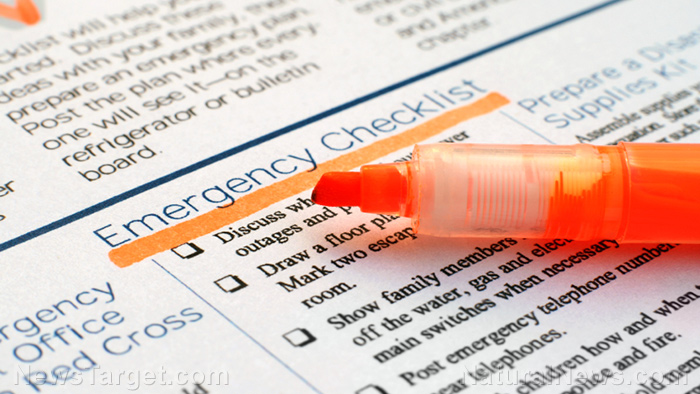 Parler
Parler Gab
Gab
Surviving a nuclear attack
While the atomic bomb dropped on Hiroshima in 1945 killed 150,000 people, another 250,000 in the area survived long-term. The damage caused by a nuclear bomb is related to its "yield" or the amount of energy produced in multiples of a thousand tons of TNT (a kiloton). To illustrate, the Hiroshima atomic bomb of 1945 had a yield of 15 kilotons. Sixteen years later, the Soviet Union developed and detonated a 51,000-kiloton weapon. But most modern warheads are in the 100- to 500-kiloton range. This is because they are designed to be fired at a target in clusters that are harder to intercept than one missile.Damage caused by nuclear weapons
The U.S. government estimates the distribution of damage from a nuclear bomb to be:- 50 percent shockwave (kinetic energy)
- 35 percent heat (thermal energy)
- 5 percent initial blast radiation
- 10 percent dispersed radiation (fallout)
Damage to the medical infrastructure
If the attack occurred in the center of a city, hundreds of thousands of survivors would require medical care. But surviving hospital units would only be able to handle a tiny fraction of the burn, trauma and radiation cases in the aftermath of an attack. The lack of medical personnel will also be an issue after SHTF. For example, 87 percent of physicians live in urban areas, where there will be many casualties. It is believed that each surviving doctor would have to treat at least 600 to 700 patients. This is why you must start stocking up on medical supplies now so you can handle medical emergencies after a nuclear attack.Supplies to stock up on before SHTF
If you are tasked with being the family medic during an emergency, you must have the right supplies for various medical emergencies. You will need trauma supplies to treat high-impact injuries like broken bones, crush injuries and hemorrhage. To treat burns, you will need clean dressings to cover injured areas of skin and prevent infection. If the victim has been exposed to radiation, you'll need tools that can help you determine the level of exposure and the chance for survival. Below are the lists of different supplies you may want to stock up on: Additional medications:- Acetaminophen (generic Tylenol)
- Antifungal cream
- Aspirin
- Bismuth subsalicylate (Pepto-Bismol)
- Diphenhydramine (generic Benadryl)
- Hydrocortisone cream
- Ibuprofen (generic Advil)
- Laxatives
- Loperamide (generic Imodium)
- Nasal decongestant (phenylephrine HCl 10mg)
- Potassium iodide tablets (for radioactive iodine)
- Prussian blue (for radioactive cesium)
- Bandage scissors or EMT shears
- Blood pressure cuff and stethoscope kit
- Curved and straight clamps
- Headlamps and penlights
- Iris or nail scissors
- Magnifying glass
- Needle holders
- Pulse oximeters and extra batteries
- Reflex hammer
- Scalpels (sterile)
- Solar/Mylar blankets
- Thermometer
- Tweezers
- Ace Wrap elastic bandage with clips
- Casting materials
- Cervical collars
- Instant and reusable hot/cold packs
- Malleable padded splints (assorted sizes)
- Moleskin sheets
- Pain reliever ointment or creams
- Triangular bandages with safety pins
- Bag valve masks
- CPR protective masks
- Sterile and non-sterile gloves
- Surgical face masks 3-ply, blue
- Eye cups
- Eye pads (sterile)
- Eye patches
- Eyewash
- Plastic eye shields
- Chest decompression needles
- Compression dressings (various sizes)
- Dressings and bandages (various sizes, sterile and non-sterile)
- Duct tape
- Gauze rolls (sterile and non-sterile)
- Hemostatic dressings
- Medical tapes
- Non-stick burn dressings
- Oral and nasal airways (various sizes)
- Self-adherent wraps (Coban)
- Sterile cotton-tipped applicators
- Tourniquets
- Vented chest seals
- Water filters
- Water purification tablets
- Rehydration salt packets
- Adhesive bandages (assorted sizes)
- Alcohol, BZK, chlorhexidine antiseptics and iodine
- Bacitracin antibiotic ointment
- Burn gel
- Dakin’s solution
- Hand sanitizers and soap
- Hydrogen peroxide
- Petroleum jelly
- Steri-Strips or butterfly bandages
- Sterile cotton-tipped applicators
- Suture and stapler Kits
- Tincture of Benzoin, swabs, or wipes (to secure Steri-trips)
- Waterproof pads (Chux)
- Wound irrigation syringes (12cc and 60cc sizes)
Tips for preventing injuries during nuclear war
Surviving a nuclear war requires careful planning to prevent injuries and sickness. Your survival depends on three important factors: time, distance and level of available protection. Time Radiation damage depends on the length of exposure, so limit the time you spend outdoors. Evacuate from areas where high levels of radiation are detected and there are no adequate shelters nearby. The activity of radioactive particles decreases over time, so within 24 hours levels should drop to 1/10 of their previous value or less. If you are driving at the time of detonation, you will be exposed to significant radiation. Cars don’t provide a significant protective barrier, so try to drive to a large concrete building or underground structure nearby for added protection. Distance Do whatever you can to increase the distance from ground zero. Living in the center of a large city means you are in a dangerous spot with a great risk for severe trauma due to blast effects. Once you survive the initial explosion, you will likely be one of many that require medical care. But any medical facilities that remain would be overwhelmed or, in some cases, non-existent. The pattern of fallout spread is a keyhole that may vary depending on prevailing winds. Since radiation disperses over distance, the effects will be decreased in proportion. Protection To increase your chance of survival, make sure you have a functioning shield. If your shelter is far from the immediate vicinity of the blast, it can help reduce the risk of injuries and radiation sickness. Shielding will decrease exposure exponentially, so you should learn how to construct a barrier between your family and the radioactive source. Use denser materials for better protection. Shielding effectiveness is measured in terms of "halving thickness," or the thickness of a particular material that will reduce gamma radiation by one-half. Multiplying the halving thickness helps multiply your protection. Here are the halving thicknesses of common building materials:- Lead – 0.4 inches (one centimeter)
- Steel – 1 inch (2.5 centimeters)
- Concrete – 2.4 inches (six centimeters)
- Packed soil – 3.6 inches (nine centimeters)
- Water – 7.2 inches (18 centimeters)
- Wood – 11 inches (28 centimeters)
More related stories:
Chinese spy balloon that flew over Montana could be used to carry EMP or nuclear weapons. Prepare before SHTF by learning how to manage first aid emergencies in austere environments. Even regular people are now constructing bunkers due to fears of a nuclear war. Sources include: DoomAndBloom.net Response.Restoration.NOAA.gov Brighteon.comHome gardening tips: How to make the best compost for healthy crops
By Zoey Sky // Share
The IMPORTATION and EXPORTATION practices that are crippling America
By S.D. Wells // Share
Biden administration may ban bank withdrawals amid decline in M2 money supply, Hugh Hendry warns
By Laura Harris // Share
Governments continue to obscure COVID-19 vaccine data amid rising concerns over excess deaths
By patricklewis // Share
Tech giant Microsoft backs EXTINCTION with its support of carbon capture programs
By ramontomeydw // Share
Germany to resume arms exports to Israel despite repeated ceasefire violations
By isabelle // Share










